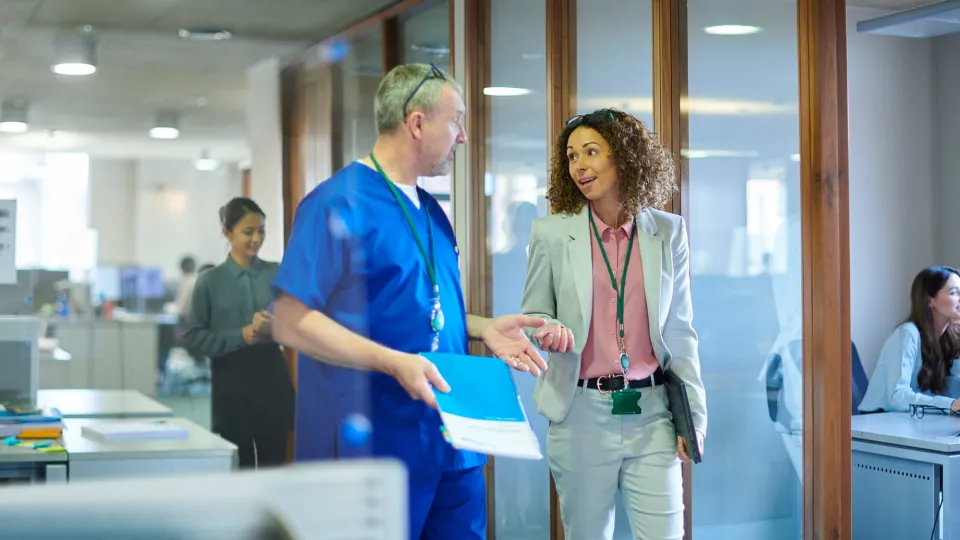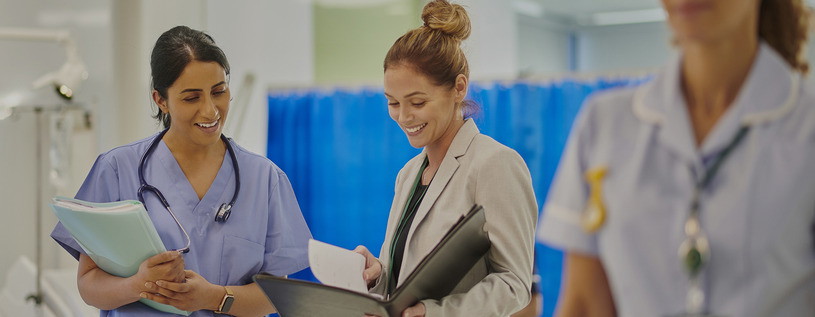Just How to Enhance Efficiency in Medical Administration with Modern Devices
Just How to Enhance Efficiency in Medical Administration with Modern Devices
Blog Article
Ideal Practices in Medical Administration for Improving Performance and Lowering Prices
In the ever-evolving landscape of health care, the quest of ideal techniques in medical management is extremely important for boosting efficiency and suppressing expenses. By incorporating sophisticated modern technologies such as digital wellness documents and telemedicine, medical care service providers can streamline operations and enhance individual treatment.
Leveraging Advanced Technology
In today's rapidly advancing healthcare landscape, leveraging advanced technology is no longer optional yet necessary for effective clinical administration. The assimilation of electronic services right into medical care systems has changed the means centers run, streamlining procedures and boosting client treatment. Electronic Health Records (EHRs) are pivotal, giving extensive person data that can be accessed instantaneously by licensed workers, therefore decreasing redundancy and lessening errors. By streamlining person information, EHRs remove the requirement for troublesome documents and assist in seamless communication among doctor.
Telemedicine is another technological improvement that has changed person interaction. It uses benefit for both clients and healthcare experts by enabling remote assessments, which can decrease the requirement for in-person visits and enhance consultation scheduling. Furthermore, telehealth platforms can prolong medical care access to country or underserved locations, connecting spaces in treatment delivery.
Moreover, making use of Expert system (AI) and artificial intelligence is ending up being significantly prevalent in anticipating analytics, enabling for very early discovery of prospective health issues and more educated decision-making. These modern technologies, when integrated efficiently, can enhance analysis accuracy and individualize person treatment strategies, ultimately causing improved health care outcomes and operational performance.
Optimizing Source Appropriation
Effective source allowance is vital for making best use of the effectiveness of medical administration. By strategically managing resources such as workers, equipment, and financial resources, healthcare facilities can significantly enhance their functional performance, boost individual outcomes, and lower unnecessary expenses. The initial step in optimizing source allowance involves performing an extensive evaluation of existing assets and recognizing areas where sources might be underutilized or overextended. This evaluation ought to be data-driven, utilizing metrics and analytics to educate decision-making processes.
Prioritizing source appropriation based on client requirements and service demands is essential. This includes lining up resources with high-demand locations, such as emergency situation care or specialized treatments, to make sure prompt and effective individual care. Carrying out adaptable staffing designs can also enhance labor sources by changing employees appropriation in response to fluctuating individual volumes. Additionally, embracing telemedicine and various other technical services can relieve physical resource constraints by using alternative avenues for patient-provider communications.
Economic sources must be diligently kept track of and alloted with calculated insight to support both temporary functional needs and long-term institutional objectives. This consists of investing in training programs that boost personnel competencies and adopting energy-efficient methods that reduce functional costs (medical administration). Ultimately, an enhanced source allotment method promotes a sustainable healthcare environment that is receptive, efficient, and monetarily sensible
Streamlining Workflow Processes
When healthcare facilities aim to enhance functional effectiveness, streamlining process procedures comes to be he said a pivotal emphasis. Efficient operations lessen redundancy, eliminate unneeded steps, and enhance coordination amongst health care specialists. This strategy not just accelerates solution shipment yet also boosts the top quality of patient care.

Following, innovation integration plays a considerable role in streamlining workflows. Applying digital health records (EHRs) and digital medical professional order entrance (CPOE) systems lowers documentation, reduces human mistake, and makes sure information comes to all appropriate employees. In addition, leveraging telemedicine platforms can improve patient appointments and follow-ups, decreasing the pressure on physical framework.

Ultimately, streamlined workflows result in set you back decreases and additional hints improved patient contentment, promoting a more sustainable medical care atmosphere.
Enhancing Information Monitoring
Structure upon structured workflows, maximizing data management comes to be a crucial component beforehand medical care management. Effective information management systems are critical for preserving exact individual documents, boosting decision-making, and ensuring compliance with regulative requirements. By applying robust information management options, medical care centers can enhance the top quality of individual care while simultaneously decreasing operational expenses.
One trick element of enhancing data administration is the assimilation of sophisticated digital health document (EHR) systems. These systems help with the seamless exchange of person information across various departments, minimizing check that replication of examinations and minimizing errors. A properly designed EHR system supports information analytics, making it possible for doctor to recognize fads and make informed decisions pertaining to person treatment.
In addition, safeguarding client information is extremely important. Taking on comprehensive cybersecurity steps, consisting of security and normal audits, makes certain the honesty and confidentiality of sensitive details. This not just protects patients yet additionally maintains the institution's track record.
Purchasing personnel training is another important element. Informing healthcare specialists on data monitoring techniques enhances their capability to efficiently make use of technology, resulting in improved individual outcomes. Finally, enhancing data administration with innovative modern technology and thorough training is important for accomplishing effectiveness and expense reduction in medical administration.
Fostering Collaborative Communication
A vital element ahead of time medical administration is fostering collaborative communication among medical care specialists. Reliable interaction is vital for making certain smooth individual treatment, enhancing treatment outcomes, and minimizing errors. By urging open discussion and sychronisation across multidisciplinary teams, medical care companies can improve their operational efficiency and lower unneeded expenses.
Central to this approach is the assimilation of interaction innovations such as electronic wellness records (EHRs) and protected messaging systems, which promote the fast exchange of essential patient details. These tools enable doctor to accessibility and share information in genuine time, making certain that all group members are informed and straightened in their decision-making procedures. Additionally, normal team conferences and interdisciplinary rounds can even more advertise a society of cooperation and accountability.
Training programs focused on enhancing interaction abilities are likewise necessary. Eventually, cultivating joint communication leads to boosted healthcare shipment and expense financial savings.

Final Thought
Including sophisticated modern technology, such as digital wellness records and telemedicine, along with optimized resource allowance and structured operations processes, is crucial for boosting efficiency in clinical management. Effective information management and fostering collaborative communication amongst health care groups are crucial for decreasing redundancies and enhancing care top quality. By prioritizing preventive care and involving in high quality enhancement campaigns, health care companies can accomplish considerable price savings and improved individual end results, therefore ensuring lasting health care delivery in an increasingly complicated atmosphere.
Report this page